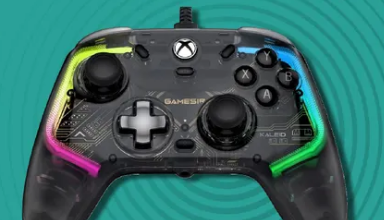
Artificial intelligence (AI) and machine learning (ML) are at the forefront of the latest advancements in digital health technology, particularly in the context of wearables. The medical industry is embracing these technologies in unprecedented ways, with pharmaceutical companies leading the charge in advancing medical treatments through their clinical research and development (R&D) efforts. By incorporating new digital solutions featuring AI/ML capabilities, pharma not only reduces costs and enhances clinical trial efficiency but also expands the use of wearable technology in healthcare, ushering in a revolution in the medical sector.
READ: Get Ready! Doki Doki Literature Club Sayori Nendoroid Now Up for Pre-Order – Grab Yours Today!”
Artificial intelligence
Over the past five years, the most significant shift in the wearables industry has been the growing demand from the medical sector, particularly in the field of “digital health.” Many wearable device companies have long been working on medical solutions, and regulatory approvals have followed. Devices that have been familiar to consumers for years, like those from Apple and Fitbit, are now being utilized in clinical research trials and by physicians to monitor patient health. Even insurance companies are recognizing the benefits of individuals monitoring their own health through wearables and are supporting the development of wearable healthcare technology.
Advancements in sensor technology have played a pivotal role in driving the demand for wearables in healthcare. For instance, wearable electrocardiograms (ECGs) emerged approximately five years ago, with devices from Apple, Samsung, Huawei, Coros, and more offering the ability to perform wrist-based ECG measurements. This data can then be shared with healthcare providers for review. This merging of recreational health and wellness with medical-grade biotech features characterizes the wearables industry today.
The Role of AI/ML in Wearable Development
To address the needs of the medical community and offer additional features for consumers, many new wearable devices utilize existing sensor technology. What sets these devices apart is how they utilize the data collected from these sensors, a function driven primarily by Artificial intelligence and, more specifically, machine learning.
Artificial intelligence facilitates decision-making and predictions through algorithms, while ML involves the development of algorithms through training based on data analysis rather than explicit programming. Take the example of ECG monitoring: several wearable ECG monitors, such as the Withings ScanWatch, offer recommendations on when to take measurements based on continuous monitoring using the optical heart rate (HR) sensor to detect irregular beats. AI/ML will continue to enhance features like these, offering the ability to learn from user data and provide tailored feedback, recommendations, and predictions.
Machine learning can be used to build static or dynamic algorithms. Static ML relies on previously gathered data to identify typical behaviors and remains unchanged once implemented. Examples include irregular heartbeat notifications, fall detection, stress detection, and general fitness tracking. On the other hand, dynamic ML models continuously train based on new data, adapting to the habits, activities, and inputs of the current user. While both approaches have their advantages and challenges, dynamic ML holds great potential for aiding in critical physician decision-making and real-time patient monitoring.
Beyond introducing new features like reminders and improving individual accuracy, AI/ML is also used to generate novel metrics based on existing sensors. For example, photoplethysmography (PPG), commonly used for HR monitoring, is now applied to measure additional health metrics, including oxygen saturation (SpO2), heart rate variability (HRV), stress levels, and respiratory rate. Research efforts continue to explore the potential of PPG for monitoring continuous glucose levels, vascular health, and cuffless blood pressure measurements.
Pharma’s Use of Wearables
One of the most significant advantages of digital health devices for pharma clinical trials is their ability to provide continuous and objective monitoring of biological data. Before the advent of these technologies, clinical trials heavily relied on patient surveys and scheduled physician visits. While both methods are still in use, wearables now offer real-time, objective monitoring of patient health. Consider the example of activity monitoring:
Actigraphy devices are commonly employed in clinical research to assess activity levels and physical functioning, which are crucial data points for study recruitment, protocol adherence, treatment response, and overall health assessment. Traditional methods such as the six-minute walk test and self-reported activity levels are notoriously unreliable.
Devices like ActiGraph and Biostrap are non-invasive and unobtrusive for patients, improving their trial participation experience and providing researchers with real-time data. This simplifies trial design and expedites the evaluation of treatment outcomes. Objective data, quicker evaluation, and increased adherence result in cost reductions for expensive drug trials, making them more appealing for pharmaceutical companies.
However, pharmaceutical companies cannot simply adopt any new wearable device on the market for their multi-year drug trials. With a myriad of options available, each with varying features, form factors, and applications, pharma must assess these devices for accuracy, usability, risk, and data availability. The most accurate device may not be suitable if it is cumbersome or uncomfortable for patients.
Ensuring patient safety is a paramount concern in setting up clinical trials, and the chosen devices must be safe and capable of providing reliable data. Many pharmaceutical companies have established digital technology departments responsible for staying current with digital health trends, understanding how to use the provided data, and overseeing preclinical testing of various devices—a vital step prior to initiating clinical trials. Some pharma companies outsource this task to companies with expertise in wearable devices and the capability to conduct preclinical testing, such as Valencell’s Biometrics Lab.
Translating R&D into Real-World Applications
Physicians rely on pharma research to understand not only the efficacy of drug treatments but also how to monitor patients for both treatment and prevention. Patients are not one-size-fits-all, and personalized medicine and individualized approaches are the future of healthcare.




